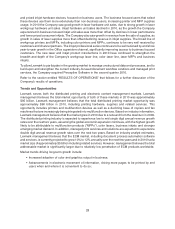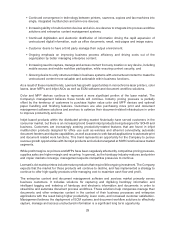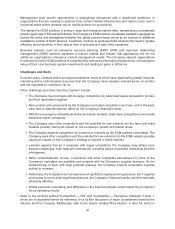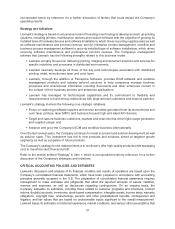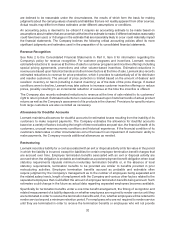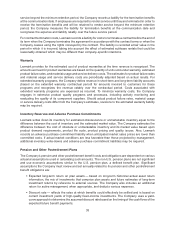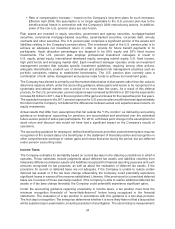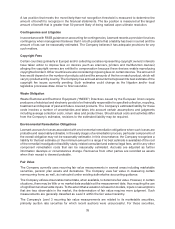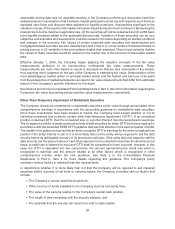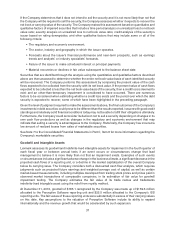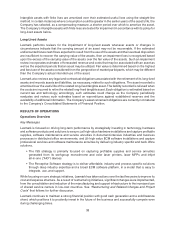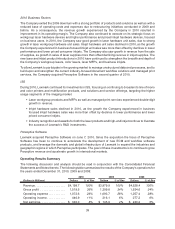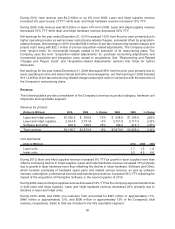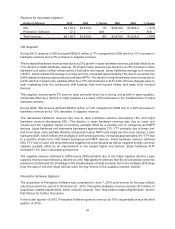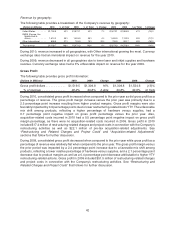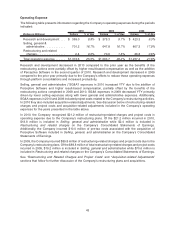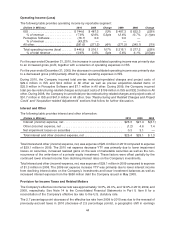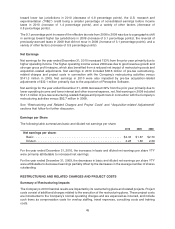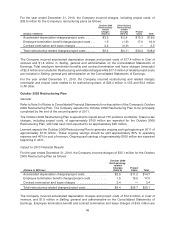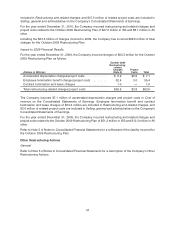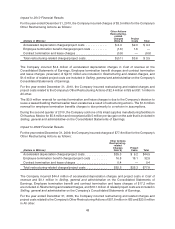Lexmark 2010 Annual Report Download - page 44
Download and view the complete annual report
Please find page 44 of the 2010 Lexmark annual report below. You can navigate through the pages in the report by either clicking on the pages listed below, or by using the keyword search tool below to find specific information within the annual report.Intangible assets with finite lives are amortized over their estimated useful lives using the straight-line
method. In certain instances where consumption could be greater in the earlier years of the asset’s life, the
Company has selected, as a compensating measure, a shorter period over which to amortize the asset.
The Company’s intangible assets with finite lives are tested for impairment in accordance with its policy for
long-lived assets below.
Long-Lived Assets
Lexmark performs reviews for the impairment of long-lived assets whenever events or changes in
circumstances indicate that the carrying amount of an asset may not be recoverable. If the estimated
undiscounted future cash flows expected to result from the use of the assets and their eventual disposition
are insufficient to recover the carrying value of the assets, then an impairment loss is recognized based
upon the excess of the carrying value of the assets over the fair value of the assets. Such an impairment
review incorporates estimates of forecasted revenue and costs that may be associated with an asset as
well as the expected periods that an asset may be utilized. Fair value is determined based on the highest
and best use of the assets considered from the perspective of market participants, which may be different
than the Company’s actual intended use of the asset.
Lexmark also reviews any legal and contractual obligations associated with the retirement of its long-lived
assets and records assets and liabilities, as necessary, related to such obligations. The asset recorded is
amortized over the useful life of the related long-lived tangible asset. The liability recorded is relieved when
the costs are incurred to retire the related long-lived tangible asset. Each obligation is estimated based on
current law and technology; accordingly, such estimates could change as the Company periodically
evaluates and revises such estimates based on expenditures against established reserves and the
availability of additional information. The Company’s asset retirement obligations are currently not material
to the Company’s Consolidated Statements of Financial Position.
RESULTS OF OPERATIONS
Operations Overview
Key Messages
Lexmark is focused on driving long-term performance by strategically investing in technology, hardware
and software products and solutions to secure: (a) high value hardware installations and capture profitable
supplies, software maintenance and service annuities in document-intensive industries and business
processes in distributed office environments; and (b) high value ECM software installations and capture
professional services and software maintenance annuities by delivering industry specific and back office
solutions.
• The ISS strategy is primarily focused on capturing profitable supplies and service annuities
generated from its workgroup monochrome and color laser printers, laser MFPs and inkjet
all-in-one (“AIO”) devices
• The Perceptive Software strategy is to deliver affordable, industry and process specific solutions
through deep industry expertise and a broad ECM software platform, in a model that is easy to
integrate, use, and support.
While focusing on core strategic initiatives, Lexmark has taken actions over the last few years to improve its
cost and expense structure. As a result of restructuring initiatives, significant changes were implemented,
from the consolidation and reduction of the manufacturing and support infrastructure to the increased use
of shared service centers in low-cost countries. See “Restructuring and Related Charges and Project
Costs” that follows for further discussion.
Lexmark continues to maintain a strong financial position with good cash generation and a solid balance
sheet, which positions it to prudently invest in the future of the business and successfully compete even
during challenging times.
38


